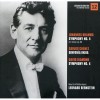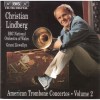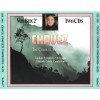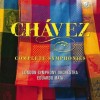Biography
Carlos Antonio de Padua Chávez y Ramírez (13 June 1899 – 2 August 1978) was a Mexican composer, conductor, music theorist, educator, journalist, and founder and director of the Mexican Symphonic Orchestra. He was influenced by native Mexican cultures. Of his six symphonies, the second, or Sinfonía india, which uses native Yaqui percussion instruments, is probably the most popular.
The seventh child of a creole family, Chávez was born on Tacuba avenue in Mexico City, near the suburb of Popotla (García Morillo 1960, 11). His paternal grandfather, José María Chávez Alonso, served as governor of the state of Aguascalientes and was ordered executed by Emperor Maximilian in 1864. His father, Augustín Chávez, invented a plough that was produced and used in the United States, and died when Carlos was barely three years old (Parker 1998, 3).
Carlos had his first piano lessons from his brother Manuel, and later on he was taught by Asunción Parra, Manuel Ponce and Pedro Luis Ozagón, for piano, and later Juan Fuentes for harmony. His family often went on vacations to Tlaxcala, Michoacán, Guanajuato, Oaxaca and other places where the cultural influence of the Mexican indigenous peoples was still very strong (Parker 2001).
In 1916, Chávez and friends started a cultural journal, Gladios, and this led to Chávez joining the staff of the Mexico City newspaper El Universal in 1924. In the succeeding 36 years he wrote over 500 items for this paper (Parker 2001; García Morillo 1960, 230–36).
After the Mexican Revolution and the installation of a democratically elected president, Álvaro Obregón, Chávez became one of the first exponents of Mexican nationalist music with ballets on Aztec themes (Parker 2001).
In September 1922, Chávez married Otilia Ortiz and they went on honeymoon to Europe, from October 1922 until April 1923, spending two weeks in Vienna, five months in Berlin, and eight or ten days in Paris (García Morillo 1960, 25–26). During the latter visit he met Paul Dukas (Parker 2001). Some months later, in December 1923, Chávez visited the United States for the first time, returning in March 1924 (García Morillo 1960, 26). Chávez again went to New York in September 1926 and stayed there until June 1928 (García Morillo 1960, 40). Upon his return to Mexico, Chávez became director of the Orquesta Sinfónica Mexicana (Mexican Symphonic Orchestra), later renamed Orquesta Sinfónica de México (Mexico's Symphonic Orchestra); the country's first permanent orchestra, started by a musicians' labor union. Chávez was instrumental in taking the orchestra on tour through Mexico's rural areas.[citation needed]
In 1928, Chávez was appointed director of Mexico's National Conservatory of Music—a position he held for six years. In that capacity, Chávez spearheaded projects to collect aboriginal folk music.[citation needed]
In 1937, Chávez published a book, Toward a New Music, which is one of the first books in which a composer speaks about electronic music. In 1938, he conducted a series of concerts with the NBC Symphony Orchestra, during a period of absence by the orchestra's regular conductor, Arturo Toscanini. In 1940 he produced concerts at New York's Museum of Modern Art, and by 1945, Chávez had come to be regarded as the foremost Mexican composer and conductor (Slonimsky 1945, 230–31).
From January 1947 until 1952, Chávez served as director-general of the National Institute of Fine Arts. In his first year, he formed the National Symphony Orchestra, which supplanted the older OSM as Mexico's premier orchestra and led to the disbanding of the older ensemble. Throughout all this time, Chávez maintained a busy international touring schedule (Parker 2001).
In May 1953 he was commissioned by Lincoln Kirstein, director of the New York City center of Music and Drama, for a three-act opera to a libretto by Chester Kallman based on a story by Boccaccio, to be titled The Tuscan Players. Intended to be finished in August 1954, it was first postponed to April 1955, but only finally completed in 1956, by which time the title had been changed twice, first to Pánfilo and Lauretta, then to El amor propiciado. The City Center waived its rights to the first performance, which was given under the title Panfilo and Lauretta in the Brander Matthews Theatre at Columbia University in New York on May 9, 1957, under the baton of Howard Shanet. Stage direction was by Bill Butler, scenic design by Herbert Senn and Helen Pond, and costumes by Sylvia Wintle. The principal singers were Sylvia Stahlman, Frank Porretta, Craig Timberlake, Mary McMurray, Michael Kermoyan, and Thomas Stewart (Taubman 1957). The opera would be revised twice more and the title changed again to Los visitantes (The Visitors), for productions in 1968 and 1973, in Mexico City and Aptos, California, respectively (Parker 2001; García Morillo 1960, 171). From 1958–1959 he was the Charles Eliot Norton professor at Harvard University, and the public lectures he gave there were published as a book, Musical Thought (Chávez 1961).
From 1970 to 1973, Carlos Chávez served as the music director of the Cabrillo Festival of Contemporary Music. His orchestral composition Discovery (1969) had previously been commission by the Festival and was first performed there.
Failing health and financial setbacks forced Chávez to sell his house[when?] in the Lomas de Chapultepec neighborhood of Mexico City and move in with his daughter Anita in Coyoacán, in the fringes of the Mexican capital, where he died quietly on 2 August 1978 (Parker 2001).
Carlos Chávez's manuscripts and papers are housed in the Music Division of the New York Public Library for the Performing Arts and in the National Archive of Mexico, in Mexico City.
He is also commemorated by the Carlos Chavez String Quartet.










